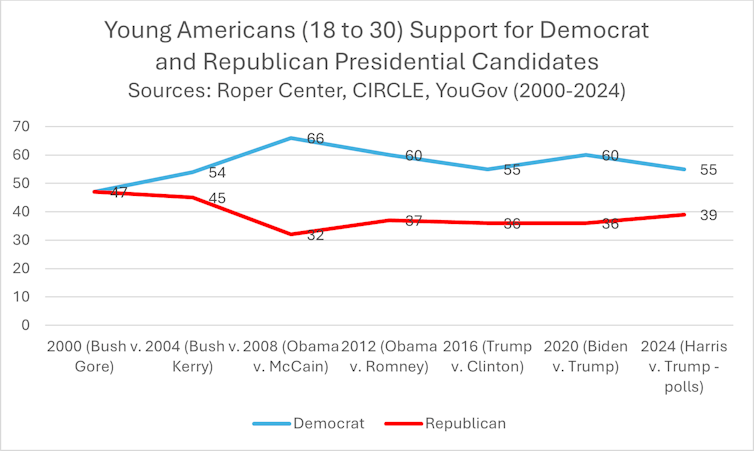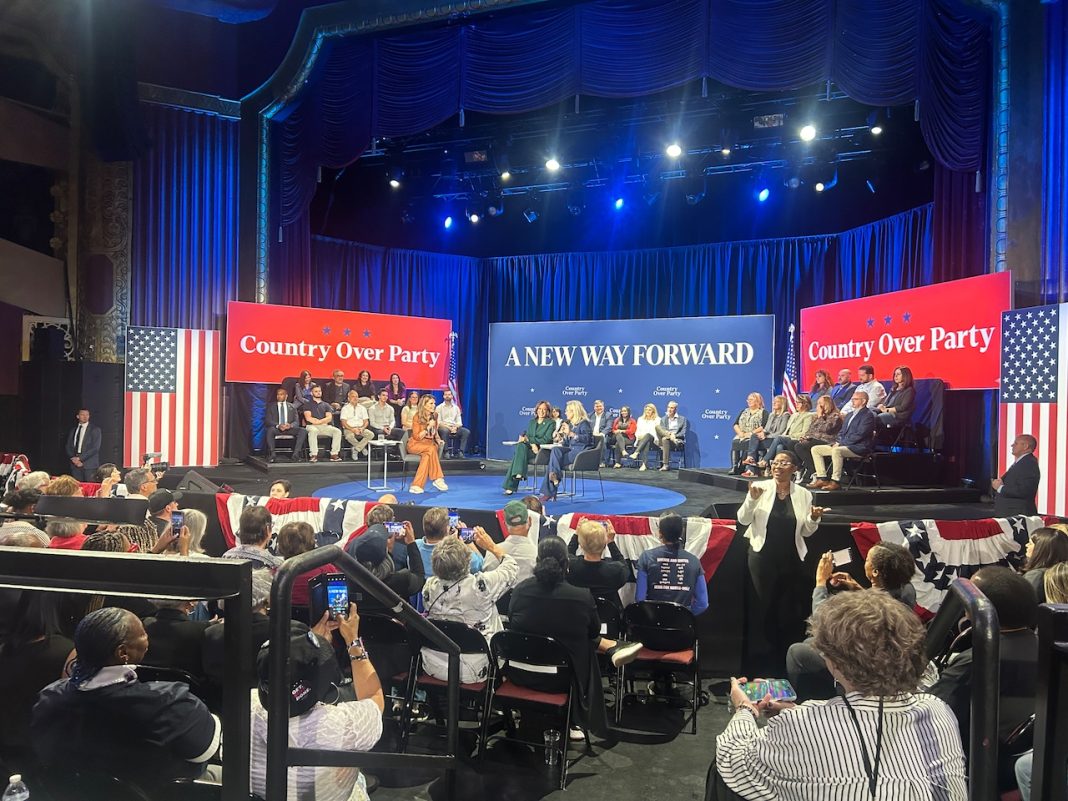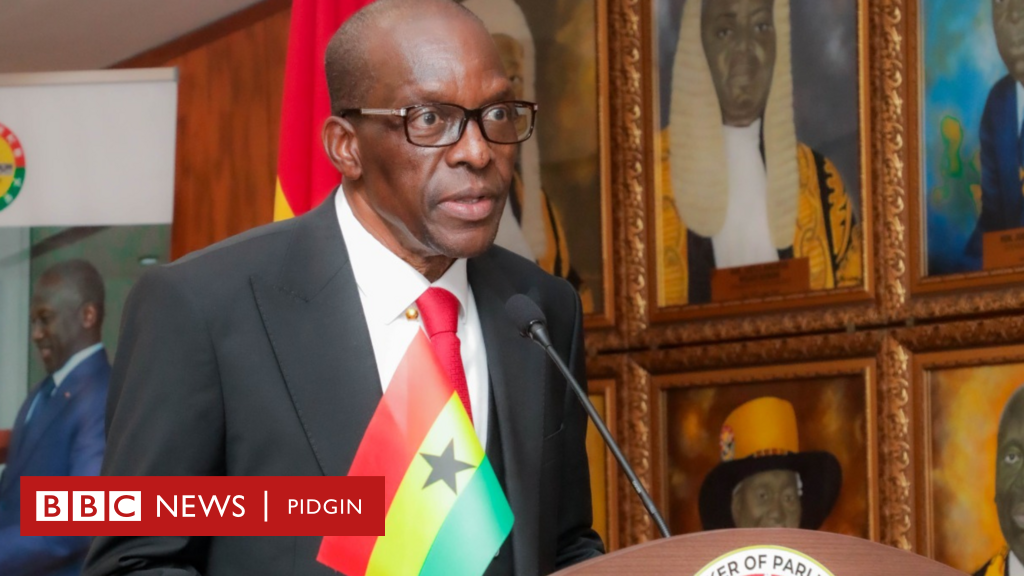US Presidential Election on a Knife Edge: Youth Vote Could Be the Deciding Factor
As the 2024 US presidential election approaches, the race is tighter than ever, with polls indicating a 50/50 split in key battleground states like Pennsylvania, Georgia, North Carolina, and Nevada. The stakes are high, as the outcome will determine whether Democratic nominee Kamala Harris or Republican challenger Donald Trump will take the reins of the White House come January 2025. In this nail-biting contest, the youth vote is poised to play a pivotal role, potentially tipping the scales in favor of one candidate or the other.
Historically, younger voters have leaned towards the Democratic Party, a trend that began to solidify during Barack Obama’s campaigns in 2008 and 2012. Back then, young Americans aged 18 to 30 overwhelmingly supported Obama, with a staggering 66% backing him over John McCain in 2008. This trend continued with Joe Biden in 2020, who garnered 61% of the youth vote against Trump. However, the enthusiasm among younger voters appears to be waning as they face a myriad of pressing issues, from economic hardships to climate change.
In recent years, the Democratic Party has enjoyed strong support from young women and voters of color, particularly Latino and Black communities. In the 2020 election, Biden secured an impressive 67% of the youth vote from young women, 69% from Latino voters, and a whopping 89% from Black voters. But as we head into this election cycle, there’s a palpable sense of disillusionment among young Americans. Many feel that neither party has adequately addressed their concerns, particularly regarding economic stability and social justice.
A recent YouGov and Economist poll revealed that while 55% of young voters still prefer Harris over Trump, the margin is far less convincing than previous elections. This shift reflects a broader discontent with the political establishment, as many young Americans express frustration over the Biden administration’s perceived inaction on critical issues like climate change, gun control, and economic inequality. With inflation hitting hard, today’s youth are grappling with soaring costs for housing, health insurance, and other essentials, leading to a growing sentiment that they may not be better off than their parents.
The 2016 election highlighted a significant divide within the Democratic Party, as many young voters rallied behind Bernie Sanders and his progressive platform, feeling that mainstream candidates like Clinton and Biden were out of touch with their needs. This disconnect has only deepened, making it crucial for the Harris campaign to engage with younger voters on the issues that matter most to them.
To boost youth turnout, grassroots initiatives like PA Youth Vote are stepping up to the plate. This bipartisan effort aims to educate young people about the importance of voting and how it directly impacts their lives. By meeting young voters where they are—schools, neighborhoods, and community spaces—these organizations are working to instill a sense of agency and urgency in the electoral process.
In Pennsylvania, a state with 19 electoral votes that could be pivotal in the election, young voters are being mobilized to make their voices heard. The success of these initiatives could mirror the significant youth turnout that helped flip Georgia for Biden in 2020, where just a 12,000-vote margin decided the outcome.
However, the road ahead is fraught with challenges. Many young voters remain skeptical, feeling that neither party truly represents their interests. A conversation I had with a young African-American taxi driver in Philadelphia encapsulated this sentiment. He expressed frustration with both parties, believing that neither would address the systemic issues facing his community. This highlights a critical gap in the current political discourse—one that needs to be bridged if candidates hope to inspire young voters to head to the polls.
As we gear up for this high-stakes election, it’s clear that the youth vote could be the deciding factor in a race that is too close to call. For Harris and the Democrats, engaging with young voters on their terms and addressing their concerns will be essential. If they can successfully tap into the energy and passion of younger Americans, they may just secure the victory they need in this knife-edge contest.
In the end, it’s not just about winning an election; it’s about ensuring that the voices of young Americans are heard and that their concerns are addressed—not just during election season, but year-round. As the election date draws closer, the question remains: will the youth show up to vote, and will their voices be enough to shape the future of the nation? Only time will tell.



